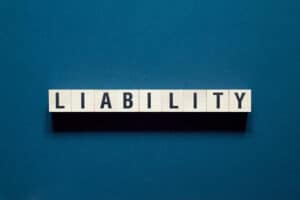General liability insurance for alarm installers covers a lot of issues with the alarm system itself: Will the installer be liable if the system doesn’t work, if it creates too many false alarms, if features aren’t as advertised? A good contract and strong insurance package can cover expenses related to these problems…but there’s another important liability issue that doesn’t always get enough attention. What if alarm installation causes property damage?
Property damage may not be as flashy as lawsuits over break-ins or fires, but it’s a lot more common and still leads to disgruntled clients demanding payback and leaving bad reviews. While liability insurance can cover many types of property damage that happen during an installation, the best option is prevention. A little training and the right equipment can help avoid everyday dings, scratches, and holes that cause big headaches for homeowners. Here are a few points to consider.
Boot and Shoe Covers Go a Long Way
Floor damage is one of the most common types of “we’re liable for repairs” damage in the alarm installation business (along with many other installers). Those shiny hardwood floors or custom stone tiles are expensive and can be dinged, scratched, or cracked during installation work. And that soft carpet may stain easily from busy boots coming and going during a project, which is guaranteed to make homeowners angry.
One effective way to prevent common damage is to always make sure work vehicles are equipped with a pack of disposable shoe covers (universal size and very affordable) and ensure that installers wear them while inside a house. That solves a lot of little problems and can even help prevent scuff marks along the walls. Plus, you won’t (usually) need to invest in more expensive floor coverings for frequent traffic.
Bonus tip: Installer shoes aren’t the only problem here. While alarm systems don’t usually require big appliances, they do need a lot of ladder work. Equip your installers with ladders that have durable, rubberized feet that can’t scratch floors or walls when repositioned.
Measure Like a Pro
“Measure twice, cut once” applies to drilling holes for cables, touch panels, and detectors, too. Encourage care when doing any wall work and double-check that your installers are using essentials like studfinders, cable clamp holders, and other tools of the trade that make jobs easier and avoid mistakes. Create a company culture of preparation and care, where it’s better to take time doing something right once rather than trying to go fast and make mistakes. Those mistakes can often leave wall damage that customers will not be happy about.
Installers Should Practice Proper Tool Management
Another source of common installation damage is forgetting where a toolbox, drill, or other tool is – and accidentally dropping them on counters, flooring, or even more fragile materials. Again, the best way to help prevent casual accidents like these is to practice a company culture of care. You can’t (and shouldn’t) be at every technician’s shoulder for every minute of their work. But you can provide them with equipment to help them stay organized and encourage workers to always be aware of where their tools are and avoid damaging drops or kicks.
Coordinate with Clients Regarding Their Pets
Another, more surprising cause of property damage and similar liability issues is dealing with pets on a property. A loose, active pet isn’t just a safety hazard: They also make damage more likely, especially if technicians have to work around or avoid unexpected encounters at crucial times.
Every installation company should discuss pets with their customers and ask that all pets be contained away from the work area until the project is finished. That doesn’t always happen, so installers should be prepared to request directly that pets be placed in a spare room or other space before they get to work.
Budget Time for a Cleanup
Even simple cleanup steps like vacuuming up drywall dust or rubbing away slight scuff marks on the walls can make a big difference. Installers should do whatever they can to show clients they respected the interior of a property, cleaned up, and left behind a functioning alarm system. Enforce a policy of cleanup for every job and provide supplies to help make these final steps easier. When owners see that installers are paying attention to the small details like this, they’re more likely to be satisfied with the job and less likely to look for things to complain about.
Minimize Risk, Maximize Efficiency
When installers are prepared to avoid property damage, the risk falls, and installation becomes less of a hassle. This kind of training and equipment can help installers focus on the job itself, with less worry about their surroundings. As a final step, you may want to implement a policy to take a few photographs of work once an installation is complete. Snapping photos is effortless with today’s smartphones, they’re easily attached to a digital work order for processing. You can also ask clients’ permission to use them as case studies, but their main purpose is to document the property and make it clear if any damage resulted from the installation.
As a professional alarm installer, be sure you are protected the same way your clients are. Give El Dorado Insurance a call today to make sure your insurance coverage is as comprehensive as the coverage of the alarms you install.






